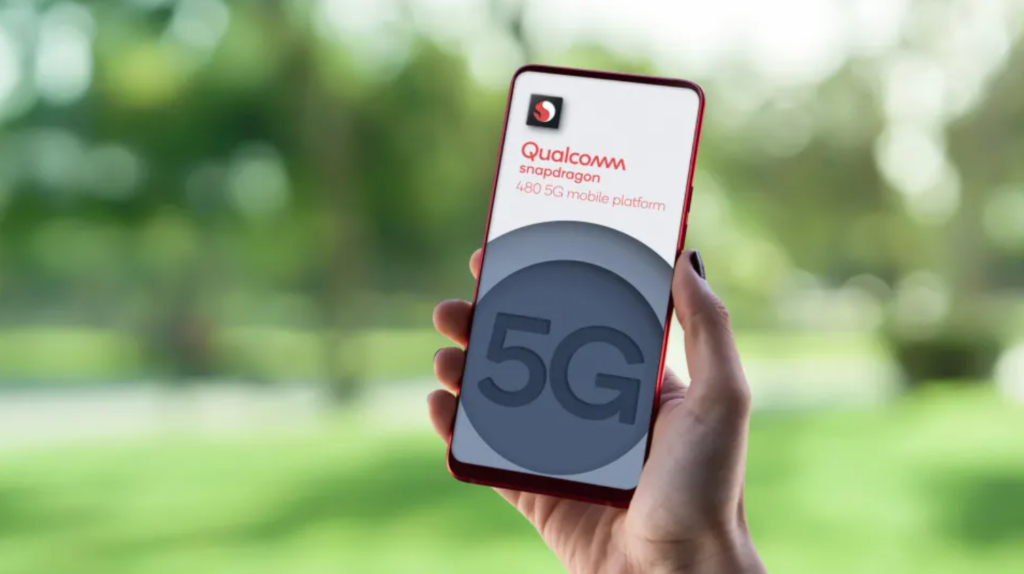
One of the biggest issues with 5G is the impact it has on phone prices, often increasing the cost of current handsets by around $100 or more compared to standard 4G phones. But with the introduction of its new Snapdragon 480 chip, Qualcomm is looking to make 5G phones much more affordable.
Despite being part of Qualcomm’s entry-level family of 400-series mobile chips, not only does the Snapdragon 480 support both sub-6GHz and mmWave 5G, it also features an eight-core processor comprised of two high-performance Cortex A76 cores along with six Cortex A55 cores for increased energy efficiency. This means the Snapdragon 480 could offer similar levels of performance to the Snapdragon 730G chip used in phones like the $350 Pixel 4a, but with added support for next-gen cellular networks. That’s something that will be a big help for any phone makers looking to create budget 5G handsets.
When it comes to wireless connectivity, the Snapdragon 480 uses a built-in X51 modem that Qualcomm claims can hit download speeds of up to 2.5 Gbps or uploads of up 660 Mbps on 5G, or max download speeds of up to 800 Mbps when connected to a regular 4G LTE network. And in addition to 5G, the Snapdragon 480 also supports Bluetooth 5.1 and Wi-Fi 6.
And even though it was designed to be an entry-level chip, the Snapdragon 480 can also deliver some high-end features previously only found on more premium phones like support for 120Hz displays (at FHD+ resolutions), photo capture with up to three cameras at one (at up to 13-MP each), triple simultaneous video capture (at up to 720p), and even 70% better AI performance compared to the previous Snapdragon 460 chip.
Excitement about new mobile chips can be somewhat muted even when we’re talking about flagship SoCs like the upcoming Snapdragon 888, but with Qualcomm targeting the Snapdragon 480 chip for use in $250 gadgets and multiple device makers including Oppo, HMD, and OnePlus already committing to making new devices using the chip, the Snapdragon 480 is poised to be a very important piece of silicon.
This is doubly true for the U.S., because unlike other countries such as China which are largely relying on sub-6GHz spectrum for early 5G deployment, the big U.S. carriers (most notably Verizon and AT&T) have invested a lot of resources in building up their mmWave 5G spectrum as well. That means in the U.S., it will become increasingly critical to have devices in every price range that can support both sub-6Ghz and mmWave 5G, particularly as we move into the later part of the year and 2022, when carriers will begin to converting part of their older 3G networks into newer and faster 5G coverage.
